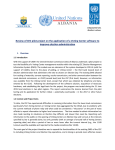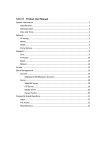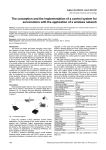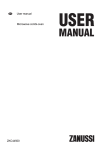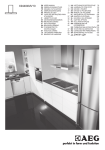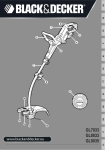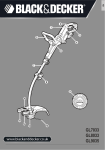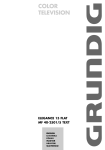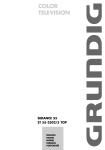Download Albanian Style Guide
Transcript
Albanian Style Guide Contents What's New? ................................................................................................................................................. 4 New Topics ................................................................................................................................................ 4 Updated Topics .......................................................................................................................................... 4 Introduction.................................................................................................................................................... 5 About This Style Guide .............................................................................................................................. 5 Style Guide Conventions ........................................................................................................................... 5 Sample Text ............................................................................................................................................... 6 Recommended Reference Material ........................................................................................................... 6 Normative References ............................................................................................................................ 6 Informative References .......................................................................................................................... 7 Language Specific Conventions ................................................................................................................... 9 Country/Region Standards ........................................................................................................................ 9 Characters .............................................................................................................................................. 9 Date ...................................................................................................................................................... 11 Time...................................................................................................................................................... 13 Numbers ............................................................................................................................................... 15 Sorting .................................................................................................................................................. 22 Geopolitical Concerns .............................................................................................................................. 24 Grammar, Syntax & Orthographic Conventions ...................................................................................... 25 Adjectives ............................................................................................................................................. 25 Articles .................................................................................................................................................. 26 Capitalization ........................................................................................................................................ 28 Compounds .......................................................................................................................................... 29 Gender .................................................................................................................................................. 31 Genitive ................................................................................................................................................ 31 Modifiers ............................................................................................................................................... 32 Nouns ................................................................................................................................................... 32 Prepositions .......................................................................................................................................... 32 Pronouns .............................................................................................................................................. 34 Punctuation........................................................................................................................................... 34 Singular & Plural ................................................................................................................................... 36 Split Infinitive ........................................................................................................................................ 36 Subjunctive ........................................................................................................................................... 36 Symbols & Non-Breaking Spaces ........................................................................................................ 36 Syntax................................................................................................................................................... 36 Verbs .................................................................................................................................................... 37 Word Order ........................................................................................................................................... 37 Style and Tone Considerations................................................................................................................ 37 Audience............................................................................................................................................... 37 Style ...................................................................................................................................................... 38 Tone ..................................................................................................................................................... 38 Voice ..................................................................................................................................................... 39 Localization Guidelines ............................................................................................................................... 40 General Considerations ........................................................................................................................... 40 Abbreviations ........................................................................................................................................ 40 Accessibility .......................................................................................................................................... 42 Acronyms.............................................................................................................................................. 42 Applications, Products, and Features .................................................................................................. 43 Frequent Errors .................................................................................................................................... 44 Glossaries............................................................................................................................................. 44 Fictitious Information ............................................................................................................................ 44 Recurring Patterns ............................................................................................................................... 44 Standardized Translations.................................................................................................................... 44 Unlocalized Items ................................................................................................................................. 45 Using the Word Microsoft ..................................................................................................................... 47 Software Considerations .......................................................................................................................... 47 User Interface ....................................................................................................................................... 47 Messages ............................................................................................................................................. 48 Keys ...................................................................................................................................................... 53 Document Translation Considerations .................................................................................................... 57 Titles ..................................................................................................................................................... 57 Copyright .............................................................................................................................................. 58 What's New? Last Updated: February 2011 New Topics The following topics were added: In Country/Region Standards, Kosovo and FYROM were added as countries where Albanian language is official and respective fields (phone, address, currency, etc.) were added or updated to reflect conventional usage in Albanian. Updated Topics The following topics were updated: In Country/Region Standards, digraphs were removed from the Extended Latin Characters list to the Notes section and date format was corrected by removing leading zero from day and month when these are represented with numbers. 4 Introduction This Style Guide went through major revision in February 2011 in order to remove outdated and unnecessary content. It contains information pertaining to all Microsoft products and services. About This Style Guide The purpose of this Style Guide is to provide everybody involved in the localization of Albanian Microsoft products with Microsoft-specific linguistic guidelines and standard conventions that differ from or are more prescriptive than those found in language reference materials. These conventions have been adopted after considering context based on various needs, but above all, they are easy to follow and applicable for all types of software to be localized. The Style Guide covers the areas of formatting, grammatical conventions, as well as language stylistic criteria. It also presents the reader with a general idea of the reasoning behind the conventions. The present Style Guide is a revision of our previous Style Guide version with the intention of making it more standardized, more structured, and easier to use as a reference. The guidelines and conventions presented in this Style Guide are intended to help you localize Microsoft products and materials. We welcome your feedback, questions and concerns regarding the Style Guide. You can send us your feedback via the Microsoft Language Portal feedback page. Scope of This Document This Style Guide is intended for the localization professional working on Microsoft products. It is not intended to be a comprehensive coverage of all localization practices, but to highlight areas where Microsoft has preference or deviates from standard practices for Albanian localization. Style Guide Conventions In this document, a plus sign (+) before a translation example means that this is the recommended correct translation. A minus sign (-) is used for incorrect translation examples. In Microsoft localization context, the word term is used in a slightly untraditional sense, meaning the same as e.g. a segment in Trados. The distinguishing feature of a term here is that it is translated as one unit; it may be a traditional term (as used in terminology), a phrase, a sentence, or a paragraph. References to interface elements really only refer to translatable texts associated with those interface elements. Example translations in this document are only intended to illustrate the point in question. They are not a source of approved terminology. Always check for approved translation in the Microsoft terminology database. 5 Sample Text Përshëndetje Vesa, Si po kalon? Letrën tënde e mora në kohën që po përgatitesha për në shkollë. Kjo letër më gëzoi shumë. Më shkruaje gjerë e gjatë për përshtatjen tënde me jetën e re. Më flisje për shoqërinë e re dhe kjo më qetësoi disi, meqë je me shokë e nuk mërzitesh. Unë nuk kam mundur të të shkruaj këto kohë, sepse kam qenë shumë e zënë. Kam ndërruar shtëpi dhe kjo gjë më ka marrë shumë kohë. Adresa ime e re është: Albana Krasniqi, Rr. "Pjetër Bogdani", nr. 39/1, Tiranë. Numri im i ri është 00377-44-31-82-82. Shtëpia e re është e madhe dhe ndodhet në një lagje të mirë, afër punës sime. Pranë pallatit ndodhet një park i vogël dhe një kënd lojërash për fëmijë. Pasditeve, kur jam e lirë, rri në dritare dhe shikoj çapkënët e vegjël që luajnë plot zhurmë e gjallëri. Unë vazhdoj të punoj përsëri në shkollën ku kam qenë. Nuk ka pak ditë që ka filluar viti i ri shkollor. Tani po përcaktojmë oraret e reja. Mësuesi yt i klasës së parë ka dalë në pension. Gjithmonë të kujton si nxënësen më të mirë që ka pasur ndonjëherë. Edhe dje më tha që të të përshëndesja nga ana e tij kur të të shkruaja. Me shoqen tënde, Ermirën, takohem shpesh, sepse e ka shtëpinë pranë meje. Edhe ajo është e kënaqur me degën që ka zgjedhur. Shpesh bisedojmë dhe kujtojmë histori të ndryshme kur keni qenë më të vogla. Shumë çamarroke keni qenë. Vetëm kur shkonit në shkollë ishit të urta. Si thua Vesë, ta mbyll, sepse po të nis me historitë tuaja, kjo letër s’do të ketë fund. Pres të më shkruash sa më shpejt për ngjarjet e reja. Të përqafoj me mall nga larg, Tezja jote Prishtinë, më 17.3.2011 It is an original composition. Shkruar më 17.3.2011 në orën 18:44 Recommended Reference Material Use the Albanian language and terminology as described and used in the following publications. Normative References These normative sources must be adhered to. Any deviation from them automatically fails a string in most cases. When more than one solution is allowed in these sources, look for the recommended one in other parts of the Style Guide. 1. Drejtshkrimi i gjuhës shqipe, Akademia e Shkencave e Shqipërisë, Instituti i Gjuhësisë dhe i Letërsisë, Tiranë 1973 (http://www.drejtshkrimi.net/). 2. Fjalori drejtshkrimor i gjuhës shqipe, Akademia e Shkencave e Shqipërisë, Instituti i Gjuhësisë dhe i Letërsisë, Tiranë 1976. 3. Gjuha letrare shqipe për të gjithë, Shtëpia botuese e librit shkollor, Tiranë, 1976. 6 4. Fjalor i gjuhës së sotme shqipe, Akademia e Shkencave e Shqipërisë, Instituti i Gjuhësisë dhe i Letërsisë, Tiranë 1980. 5. Fjalor i shqipes së sotme, Akademia e Shkencave e Shqipërisë, Instituti i Gjuhësisë dhe i Letërsisë, Tiranë, 1984. 6. Për pastërtinë e gjuhës shqipe. Grupi i përpunimit dhe i redaktimit: prof. Androkli Kostallari (kryetar), prof. Emil Lafe, prof. Jani Thomai, dr. Engjëll Angoni, Akademia e Shkencave e RSH, Instituti i Gjuhësisë dhe i Letërsisë, Tiranë, 1998. 7. Samara, M., Fjalor i antonimeve në gjuhën shqipe, Akademia e Shkencave e RSH, Instituti i Gjuhësisë dhe i Letërsisë, Shkup, 1998. 8. Thomai, J., Fjalor frazeologjik i gjuhës shqipe, Akademia e Shkencave e Shqipërisë, Instituti i Gjuhësisë dhe i Letërsisë, Tiranë, 1999. 9. Gramatika e gjuhës shqipe I. Akademia e Shkencave. Tiranë, 2002. 10. Gramatika e gjuhës shqipe II. Akademia e Shkencave. Tiranë, 2002. 11. Rregullat e pikësimit në gjuhën shqipe, Akademia e Shkencave e Shqipërisë, Instituti i Gjuhësisë dhe i Letërsisë, Tiranë 2002. 12. Fjalor i shqipes së sotme, Akademia e Shkencave e Shqipërisë, Instituti i Gjuhësisë dhe i Letërsisë, Tiranë 2002. 13. Fjalori sinonimik i gjuhës shqipe, Akademia e Shkencave e Shqipërisë, Instituti i Gjuhësisë dhe i Letërsisë, Tiranë 2004. 14. Fjalor i gjuhës shqipe, Akademia e Shkencave e Shqipërisë, Instituti i Gjuhësisë dhe i Letërsisë, Tiranë 2006. 15. Elezi, M., Fjalor i gjuhës shqipe, Enti botues “Gjergj Fishta”, Tiranë, 2006. Informative References These sources are meant to provide supplementary information, background, comparison, etc. 1. The IBM Dictionary of Computing (on disk) based on the printed IBM Dictionary of Computing published by McGraw-Hill in 1994. 2. Dictionary of computer and internet words, by Steven Kleinedler, Houghton Mifflin Company, American Heritage Dictionary, American Heritage Publishing Company, 2001. 3. Microsoft Computer Dictionary, fifth edition, 2002. 4. Dictionary of Computer and Internet terms, seventh edition, Columbia Press, Coypiright by Columbia University Press, New York, 2002. 5. Dictionary of computer and internet terms, seventh edition, Columbia Press, 2002. 6. American Heritage Dictionary of the English Language, This recommended English language reference is available online for free at http://www.bartleby.com/61/. 7. Microsoft Computer Dictionary, fifth edition, Microsoft Press, 2002. 8. Fjalor i informatikës (anglisht – shqip; shqip – anglisht), Akademia e Shkencave dhe e Arteve e Kosovës, Nebi Caka, Agni Dika, Seb Rodiqi, red. Rexhep Ismajli, Prishtinë, 2005. 7 9. Mehmeti, A. Sh., Fjalor enciklopedik nga teknologjia e informacionit, anglisht – shqip – gjermanisht frëngjisht, Prishtinë, 2006. 10. Concise Oxford English Dictionary, Tenth edition on CD-ROM 2001, version 1.1. 11. http://anakin.ncst.ernet.in/~aparna/consolidated/ 12. http://computerdictionary.tsf.org.za/dictionary/terms/computerdictionary-all.html#a 13. http://computing-dictionary.thefreedictionary.com/batch+processing 14. http://l10n.openoffice.org/localization/translation.html 15. http://www.computer-dictionary-online.org/m.htm?q=~m 16. http://www.geocities.com/spanishlocalizer/files/websitelocalisation.PDF 17. http://www.jostrans.org/issue08/art_pierini.pdf 18. http://www.localizationworks.com/cgi/doc.cgi?loccareers.html 19. http://www.shpresa-al.com/index.php?l=product_list&c=38 20. http://www.smo.uhi.ac.uk/~oduibhin/tearmai/liosta.htm 21. http://www.stern.nyu.edu/it/faqs/glossary.html 22. http://www.webopedia.com/ 23. http://www.acronymfinder.com/ 24. http://www.wordesign.com/localization/index.htm 25. http://live.gnome.org/TranslationProject/DevGuidelines 26. http://java.sun.com/products/jlf/ed2/book/Appendix.C.html 8 Language Specific Conventions This part of the style guide contains information about standards specific to Albanian. Country/Region Standards Characters Country/region Albania, Kosovo, FYROM Lower-case characters a,b,c,ç,d,dh,e,ë,f,g,gj,h,i,j,k,l,ll,m,n,nj,o,p,q,r,rr,s,sh,t,th,u,v,x,xh,y,z,zh Upper-case characters A,B,C,Ç,D,Dh,E,Ë,F,G,Gj,H,I,J,K,L,Ll,M,N,Nj,O,P,Q,R,Rr,S,Sh,T,Th,U,V,X,Xh,Y,Z,Zh Characters in caseless scripts n/a Extended Latin characters ç,ë Ç,Ë Note on alphabetical order Alphabetical order is necessarily indicative of sorting order. Total number of characters 36 Character UNICODE Unicode Standard Name A 0041 Latin capital letter a B 0042 Latin capital letter b C 0043 Latin capital letter c D 0044 Latin capital letter d E 0045 Latin capital letter e F 0046 Latin capital letter f G 0047 Latin capital letter g H 0048 Latin capital letter h I 0049 Latin capital letter i J 004A Latin capital letter j K 004B Latin capital letter k L 004C Latin capital letter l M 004D Latin capital letter m Unicode codes 9 Country/region Albania, Kosovo, FYROM N 004E Latin capital letter n O 004F Latin capital letter o P 0050 Latin capital letter p Q 0051 Latin capital letter q R 0052 Latin capital letter r S 0053 Latin capital letter s T 0054 Latin capital letter t U 0055 Latin capital letter u V 0056 Latin capital letter v X 0058 Latin capital letter x Y 0059 Latin capital letter y Z 005A Latin capital letter z a 0061 Latin small letter a b 0062 Latin small letter b c 0063 Latin small letter c d 0064 Latin small letter d e 0065 Latin small letter e f 0066 Latin small letter f g 0067 Latin small letter g h 0068 Latin small letter h i 0069 Latin small letter i j 006A Latin small letter j k 006B Latin small letter k l 006C Latin small letter l m 006D Latin small letter m n 006E Latin small letter n o 006F Latin small letter o p 0070 Latin small letter p q 0071 Latin small letter q 10 Country/region Albania, Kosovo, FYROM r 0072 Latin small letter r s 0073 Latin small letter s t 0074 Latin small letter t u 0075 Latin small letter u v 0076 Latin small letter v x 0078 Latin small letter x y 0079 Latin small letter y z 007A Latin small letter z Ç 00C7 Latin capital letter c with cedilla Ë 00CB Latin capital letter e with diaeresis ç 00E7 Latin small letter c with cedilla ë 00EB Latin small letter e with diaeresis Albanian uses the following digraphs: Notes dh,gj,ll,nj,rr,sh,th,xh,zh Dh,Gj,Ll,Nj,Rr,Sh,Th,Xh,Zh These have not yet been implemented as extended characters. Date Country/region Albania, Kosovo, FYROM Calendar/Era Gregorian Calendar/Dionysian “Common Era” First Day of the Week Monday First Week of the Year 1-7 January Separator . Default Short Date Format d.M.yyyy Example 17.3.2011 Default Long Date Format d MMMM yyyy 11 Country/region Albania, Kosovo, FYROM Example 17 mars 2011 Additional Short Date Format 1 d.R.yyyy Example 17.III.2011 Additional Short Date Format 2 n/a Example n/a Additional Long Date Format 1 n/a Example n/a Additional Long Date Format 2 n/a Example n/a Leading Zero in Day Field for Short Date Format no Leading Zero in Month Field for Short Date Format no No. of digits for year for Short Day Format 4 Leading Zero in Day Field for Long Date Format no Leading Zero in Month Field for Long Date Format no Number of digits for year for Long Day Format 4 C, më d.M.yyyy or Date Format for Correspondence C, më d MMMM yyyy or C, më d.R.yyyy Example Tiranë, më 17.3.2011 12 Country/region Albania, Kosovo, FYROM or Tiranë, më 17 mars 2011 or Tiranë, më 17.III.2011 Notes R is for month in Roman numerals. C is for city name. d is for day, number of d's indicates the format (d = digits without leading zero, dd = digits with leading zero, ddd = the abbreviated day name, dddd = full day name) Abbreviations in Format Codes M is for month, number of M's gives number of digits. (M = digits without leading zero, MM = digits with leading zero, MMM = the abbreviated name, MMMM = full name) y is for year, number of y's gives number of digits (yy = two digits, yyyy = four digits) Time Country/region Albania, Kosovo, FYROM 24 hour format yes Standard time format HH:mm:ss Standard time format example 03:24:12 Time separator colon : Time separator examples 03:24:12 Hours leading zero yes Hours leading zero example 03:24:12 String for AM designator n/a String for PM designator n/a Notes n/a 13 Days Country/region: Albania, Kosovo, FYROM Day Normal Form Abbreviation Monday e hënë n/a Tuesday e martë n/a Wednesday e mërkurë n/a Thursday e enjte n/a Friday e premte n/a Saturday e shtunë n/a Sunday e diel n/a First Day of Week: e hënë Is first letter capitalized?: No Notes: - If the day of the week is the first word in a sentence the article is capitalized. - There is no abbreviated form of days in Albanian, but sometime, due to restrictive space purposes on small calendars, these abbreviations are used: Monday e hënë H Tuesday e martë M Wednesday e mërkurë M Thursday e enjte E Friday e premte P Saturday e shtunë Sh Sunday e diel D Months Country/region: Albania, Kosovo, FYROM Month Full Form Abbreviated Form Long Date Form January janar n/a janar February shkurt n/a shkurt March mars n/a mars 14 Month Full Form Abbreviated Form Long Date Form April prill n/a prill May maj n/a maj June qershor n/a qershor July korrik n/a korrik August gusht n/a gusht September shtator n/a shtator October tetor n/a tetor November nëntor n/a nëntor December dhjetor n/a dhjetor Is first letter capitalized?: No Notes: The name of the month is capitalized only if it is the first word of a sentence, or if it is written as the full form of a national holiday or a great historical event. Numbers There is not any rule in Albanian for numbers less then 10. They can be written as words or as numerals. It depends on the requirements of the text translated. Number with more than four digits (excluding decimal digits) require a non-breaking space. Phone Numbers Country/ region International Dialing Code Area Codes Used? Number of Digits – Area Codes Separator Number of Digits – Domestic Digit Groupings – Domestic Albania 00355 yes 3 - 9 (###) ###-### Country/ region Number of Digits – Local Digit Groupings – Local Number of Digits – Mobile Digit Groupings – Mobile Number of Digits – International Digit Groupings – International Albania 6 ###-### 10 ###-##-##### 14 (#####) (###) ###-### 15 Country/ region International Dialing Code Area Codes Used? Number of Digits – Area Codes Separator Number of Digits – Domestic Digit Groupings – Domestic Kosovo 00377 yes 3 - 9 (###) ###-### Country/ region Number of Digits – Local Digit Groupings – Local Number of Digits – Mobile Digit Groupings – Mobile Number of Digits – International Digit Groupings – International Kosovo 6 ###-### 10 ###-##-##### 14 (#####) (###) ###-### Country/ region International Dialing Code Area Codes Used? Number of Digits – Area Codes Separator Number of Digits – Domestic Digit Groupings – Domestic FYROM 00389 yes 3 - 9 (###) ###-### Country/ region Number of Digits – Local Digit Groupings – Local Number of Digits – Mobile Digit Groupings – Mobile Number of Digits – International Digit Groupings – International FYROM 6 ###-### 10 ###-##-##### 14 (#####) (###) ###-### Notes: N/A. Addresses Country/region: Albania Disclaimer: Please note that the information in this entry should under no circumstances be used in examples as fictitious information. Address Format: 1. [Title/Honorific] LastName LastName 2. [CompanyName] 3. [Address1] 4. [Address2] 16 5. [CountryCode-] PostalCode City 6. [Country] Example Address: Dr. Agim Fusha Alba-Trans Ismail Qemali, nr. 11 1000 Tiranë Albania Local Postal Code Format: Albania: 1700 Notes: n/a Country/region: Kosovo Disclaimer: Please note that the information in this entry should under no circumstances be used in examples as fictitious information. Address Format: 1. [Title/Honorific] LastName LastName 2. [CompanyName] 3. [Address1] 4. [Address2] 5. [CountryCode-] PostalCode City 6. [Country] Example Address: Dr. Agim Fusha Alba-Trans Ismail Qemali, nr. 11 1000 Prishtinë Kosovo Local Postal Code Format: Kosovo: 1700 Notes:n/a Country/region: FYROM Disclaimer: Please note that the information in this entry should under no circumstances be used in examples as fictitious information. Address Format: 1. [Title/Honorific] LastName LastName 2. [CompanyName] 17 3. [Address1] 4. [Address2] 5. [CountryCode-] PostalCode City 6. [Country] Example Address: Dr. Agim Fusha Alba-Trans Ismail Qemali, nr. 11 1000 Skopje FYROM Local Postal Code Format: FYROM: 1700 Notes: n/a Currency Country/region Albania Currency Name lek (plural lekë) Currency Symbol n/a Currency Symbol Position n/a Positive Currency Format 86 978 400 lekë Negative Sign Symbol - Negative Currency Format -498 950 lekë Decimal Symbol , Number of Digits after Decimal 2 Digit Grouping Symbol (space) (from number 10,000 and up) Number of Digits in Digit Grouping 3 (from number 10,000 and up) Positive Currency Example 2850 lekë Negative Currency Example -388 900 lekë ISO Currency Code ALL Currency Subunit Name n/a 18 Country/region Albania Currency Subunit Symbol n/a Currency Subunit Example n/a Country/region Kosovo Currency Name euro Currency Symbol € Currency Symbol Position after number Positive Currency Format 86 978 400 euro Negative Sign Symbol - Negative Currency Format -498 950 euro Decimal Symbol , Number of Digits after Decimal 2 Digit Grouping Symbol (space) (from number 10,000 and up) Number of Digits in Digit Grouping 3 (from number 10,000 and up) Positive Currency Example 2850 euro Negative Currency Example -388 900 euro ISO Currency Code EUR Currency Subunit Name qindarkë (plural qindarkë) Currency Subunit Symbol c Currency Subunit Example 50 cent Country/region FYROM Currency Name denar (plural denarë) Currency Symbol n/a Currency Symbol Position n/a 19 Country/region FYROM Positive Currency Format 86 978 400 denarë Negative Sign Symbol - Negative Currency Format -498 950 denarë Decimal Symbol , Number of Digits after Decimal 2 Digit Grouping Symbol (space) (from number 10,000 and up) Number of Digits in Digit Grouping 3 (from number 10,000 and up) Positive Currency Example 2850 denarë Negative Currency Example -388 900 denarë ISO Currency Code MKD Currency Subunit Name deni Currency Subunit Symbol n/a Currency Subunit Example 50 denë Digit Groups Country/region: Albania, Kosovo, FYROM Decimal Separator: , Decimal Separator Description: comma Decimal Separator Example: 876,73 Thousand Separator: Thousand Separator Description: space Thousand Separator Example: 84 848 Notes: The thousand separator is used only for numbers from 10,000 and up. Measurement Units Metric System Commonly Used?: Yes Temperature: Celsius 20 Category English Translation Abbreviation Linear Measure Kilometer kilometër km Meter metër m Decimeter decimetër dm Centimeter centimetër cm Millimeter milimetër mm Hectoliter hektolitër hl Liter litër l Deciliter decilitër dl Centiliter centilitër cl Milliliter mililitër ml Ton ton t Kilogram kilogram kg Pound paund n/a Gram gram g Decigram decigram dg Centigram centigram cg Milligram miligram mg Inch inç n/a Feet këmbë n/a Mile milje n/a Gallon galon n/a Capacity Mass English Units of Measurement Notes: N/A Percentages The percentage and per mil symbols should be written right next to value that precede it. Example: 5%, 10‰. 21 Sorting 1. Capital letters and lowercase letters are not equal. A distinction is made between them. The lowercase letter sort before the same capital letter. Sorting rules Character sorting order 2. The extended characters ç and ë are not the equivalents of c and e but treated as separate letters of the alphabet. 3. The Characters Ä, ä, Ö, ö, ñ and Ü, ü (not used in Albanian, but may come up in German or Swedish examples or words imported from these languages) are sorted as a (Ä, ä), o (Ö, ö), n (ñ) and u (Ü, ü). 4. Other accented characters are equal with non-accented characters; so é and e are equal. 5. Non-alphabetical characters (i.e. symbols like @ ! #) sort before the letters of the alphabet. 6. Digits sort after the non-alphabetical characters and before the letters of the alphabet. 7. Double letters of Albanian dh, gj, ll, nj, rr, sh, th, xh and zh sorts as separate letters of the alphabet. a 0097 A 0065 b 0098 B 0066 c 0099 C 0067 ç 0231 Ç 0199 d 0100 D 0068 dh 0100+0104 Dh 0068+0104 e 0101 E 0069 ë 0235 Ë 0203 f 0102 F 0070 g 0103 G 0071 gj 0103+0106 Gj 0071+0106 h 0104 H 0072 i 0105 I 0073 j 0106 J 0074 k 0107 K 0075 l 0108 L 0076 ll 0108+0108 Ll 0076+0108 m 0109 M 0077 n 0110 N 0078 nj 0110+0106 Nj 0078+0106 o 0111 O 0079 p 0112 P 0080 q 0113 Q 0081 22 r 0114 R 0082 rr 0114+0114 Rr 0082+0114 s 0115 S 0083 sh 0115+0104 Sh 0083+0104 t 0116 T 0084 th 0116+0104 Th 0084+0104 u 0117 U 0085 v 0118 V 0086 x 0120 X 0088 xh 0120+0104 Xh 0088+0104 y 0121 Y 0089 z 0122 Z 0090 zh 0122+0104 Zh 0090+0104 Examples of sorted words @ 1 Aaron andere ändere chaque chemin cote coté côte côté čučēt Czech hiša irdisch lävi lie lire Löwen lõug lòza luck luč Lübeck lye llama Männer 23 màšta mîr möchten myndig piña pint pylon sämtlich šàran savoir Šerbūra Sietla ślub subtle symbol waffle wood väga verkehrt vox yen yuan yucca ţal ţena Ţenēva zoo Zürich Zviedrija zysk zzlj zzlz zznj zznz Geopolitical Concerns Part of the cultural adaptation of the US-product to a specific market is the resolving of geopolitical issues. While the US-product should have been designed and developed with neutrality and a global audience in mind, the localized product should respond to the particular situation that applies within the target country/region. Sensitive issues or issues that might potentially be offensive to the users in the target country/region may occur in any of the following: 24 Maps Flags Country/region, city and language names Art and graphics Cultural content, such as encyclopedia content and other text where historical or political references may occur Some of these issues are relatively easy to verify and resolve: the objective should be for the localizer to always have the most current information available. Maps and other graphic representations of countries/regions and regions should be checked for accuracy and existing political restrictions. Country/region, city and language names change on a regular basis and need to be checked, even if previously approved. A thorough understanding of the culture of the target market is required for checking the appropriateness of cultural content, clip art and other visual representations of religious symbols, body and hand gestures. Guideline As country/region and city names can change, please use the most up-to-date Albanian list for every release of your product. Grammar, Syntax & Orthographic Conventions This section includes information on how to apply the general rules of the Albanian language to Microsoft products and documentation. Adjectives There are no specific rules in Albanian regarding the usage of adjectives in translations/localizations for Microsoft. The translator/reviewer should follow the strict rules for this matter, which can be found in respective books mentioned in the normative references. The only thing to bear in mind is that adjectives can also have negative meaning through the use of a derivative marker. The following examples show how to do this in Albanian. During the translation into Albanian, the negative meaning of adjectives is expressed by different negative markers, for example: jo-, pa-, mos- etc. These negative markers are written jointly in unarticulated adjectives and are written separately in articled adjectives and nouns. English example Albanian example non-member (+) joanëtar undefined (+) i papërcaktuar invisible (+) i padukshëm 25 English example Albanian example unavailable (+) jo në dispozicion Possessive adjectives The frequent use of possessives is a feature of English language. Articles General considerations Many error messages in English vary with regard to the use of articles, demonstrative and possessive pronouns. Please be consistent in how you deal with such variation in Albanian. The definite article is used always in Albanian, even if it is not present in English examples. The demonstrative pronouns are generally used in Albanian examples. The possessive pronouns are not always used, depending on the context. English example Albanian example Explanation File already exists (+) Skedari tashmë ekziston In complete sentences, use determiners consistently even if the US string does not. Not enough memory to complete this operation. (+) Nuk ka memorie të mjaftueshme për të përfunduar këtë operacion. No need to use a demonstrative construction, unless it is important in context. Windows Vista cannot start your system. If the problem persists, (+) Windows Vista nuk mund të nisë sistemin. Nëse problemi përsëritet sërish, kontakto Avoid using possessive marker “your” unless ownership is The file already exists This file already exists 26 English example Albanian example Explanation contact your network administrator. administratorin e rrjetit. important in context. Unlocalized Feature Names - Microsoft product names and non-translated feature names are used without definite or indefinite articles in the English language. Non-translated feature names should be used without a hyphen or article in Albanian language, for example: English example Windows password Albanian example (+) Fjalëkalimi i Windows (-) Fjalëkalimi i Windows-it Microsoft SQL Server Database (+) Baza e të dhënave e Microsoft SQL Server Microsoft BackOffice product family (+) Familja e produktit të Microsoft. Localized Feature Names By contrast, translated feature names are used with a definite or indefinite article as they are not treated as proper names. Example: English example Albanian example Hide the Task Manager when it is minimized (+) Fshih Menaxherin e detyrës kur minimizohet Check for updates in your installed Media Player's language (+) Kontrollo për përditësime në gjuhën e Lexuesit të medias të instaluar Articles for English Borrowed Terms When faced with an English loan word previously used in Microsoft products, consider the following options: Motivation: Does the English word have any formally motivated features that would allow a straightforward integration into the noun class system of Albanian language? Analogy: Is there an equivalent Albanian term whose article could be used? Frequency: Is the term used in other technical documentation? If so, what article is used most often? The internet may be a helpful reference here. 27 Example: English example Anglicism in target language Correct example Accidental CapsLock (-) CapsLock aksidental (+) CapsLoc i rastësishëm Excellent! (-) Ekselent! (+) Shkëlqyeshëm! Accommodate learning abilities (-) Akomodo aftësitë e mësimit (+) Vendos aftësitë e mësimit Explicit Eap failure received (-) Dështim eksplicit i Eap-it të marrë (+) Dështim i qartë i Eap-it të marrë Invalid device command (-) Komandë invalide e pajisjes (+) Komandë e pavlefshme e pajisjes Capitalization The rules of capitalization in English source are not always followed in Albanian, because the English language tends to overuse capitals. For example, in “Using File Properties” every word is written in capitals, but in Albanian only the first word is written in capital “Përdorimi i vetive të skedarit”. In Albanian the names of weeks, months, languages and ethnonymes are not written in capital: e hënë, e diel; janar, qershor; shqip, anglisht; shqiptar, anglez etc. For detailed rules of capitalization, please refer to the respective reference in the normative reference section. 28 Some strings are concatenated “at run-time” and you will occasionally find strings that seem to lack a subject or simply start in the middle. Be careful not to start such strings with an upper-case letter, unless the spelling rules of your language require it. Example of a string: is trying to connect to this computer. If you allow, you will be disconnected, but you can resume later. Do you want to allow this connection?\r\n English example Albanian example unknown software exception\r\n (+) përjashtim i panjohur i softuerit\r\n Using File Properties (+) Përdorimi i vetive të skedarit Monday (+) e hënë January (+) janar English (+) anglisht Albanian (+) shqiptar Should an English noun be capitalized in the source string and be translated by two words in the target language, be consistent in capitalizing either both words, and neither word, or capitalize one word and not the other. Be consistent in the application of spelling rules. Compounds Generally, compounds should be understandable and clear to the user. Overly long or complex compounds should be avoided. Keep in mind that unintuitive compounds are ultimately an intelligibility and usability issue. Noun and verb compounds are a frequent word formation strategy in English. Product user interfaces, online help, and documentation contain a number of such examples. However, not all languages use compounding to create complex word meanings. Albanian language employs compounding as a word formation strategy. There is no length restriction that Albanian places on the formation of compounds. The Albanian compounds spelled jointly, or delimited by hyphens. Generally, compounds should be understandable and clear to the user. Overly long or complex compounds should be avoided by verbally expressing the relationship among the various compound components. Keep in mind that unintuitive compounds are ultimately an intelligibility and usability issue. 29 English examples Albanian example Internet Accounts (+) Llogaritë në internet Logon script processing (+) Përpunimi i skriptit të lidhjes Workgroup Administrator (+) Administratori i grupit të punës Internet News Server Name (+) Emri i serverit të të rejave në internet Compounds with Product or Component Names The compounds below contain both, product and component names. The product names are marked in red. Product names are usually trademarked and, therefore, must remain unchanged. Additions to a product or component name are added with a hyphen or, if that is not appropriate, you need to create a periphrastic construction. The product names must remain unchanged, but they will be accompanied by an additional Albanian word according to Albanian’s word order. English example Albanian example Windows password (+) Fjalëkalimi i Windows Microsoft Word document (+) Dokument në Microsoft Word Microsoft SQL Server Database (+) Baza e të dhënave e Microsoft SQL Server Microsoft BackOffice product family (+) Familja e produktit të Microsoft BackOffice ActiveX Control (+) Kontrolli ActiveX 30 Note: These are considered product names and they are always used without a hyphen or article in any language: Microsoft Office System Microsoft Windows Server System Windows Mobile Compounds with Acronyms, Abbreviations or Numerals The compounds below contain either an abbreviation or a numeral followed by a component name. The abbreviation or numeral is marked in red in the English example. The Albanian example below show how such constructions should be translated. English example Albanian example CD-ROM drive (+) Njësia e diskut CD-ROM 2-D gridlines (+) Vijat e rrjetës 2-D 24 bit color value (+) Vlera e ngjyrës 24 bit 3.5 Floppy (+) Disketa 3.5 51/4-inch Floppy (+) Disketa 51/4-inch 35mm slides (+) Pamje rrëshqitëse 35mm Gender There are no specific rules in Albanian regarding this issue, and for neutral usage the masculine form is preferred. It does not stress gender differences or reinforce stereotypical distinctions between men and women. So the masculine form will be used during the localization into Albanian language. Genitive The genitive case in Albanian is formed with the articles i/e/të/së according to the respective rules of inflection. Convention 1 Follow all general rules regarding the inflection in the genitive case, except for unlocalized product/feature names which should not take any flections. (e.g. Attaching genitive flections to (trademarked) product names is not feasible, as it could be interpreted as a modification of such names.) Example: Microsoft IME (+) IME e Microsoft (-) IME e Microsoftit 31 Modifiers In Albanian localized text you often need to use modifiers expressed in adjectives, pronouns, numerals or another noun that are part of a group lead by a noun, or a part of a noun group. Use of modifiers should follow general usage rules of Albanian as mentioned in the normative reference books. Example: Run a custom dialog box. Ekzekuto një kuti dialogu të përshtatur. (modifier expressed with another noun) Nouns General considerations Nouns are naming words: they can be particular names of particular people or things, or generic designations. The noun is characterized in its morphology by grammatical categories of gender, number, case and definiteness. Each noun has a specific gender on its own in contrast with adjectives whose gender depends on the noun they modify. Inflection In Albanian there are two major types of noun inflection, conventionally called Masculine (because most nouns that designate males follow this inflection pattern) and Feminine (because most nouns that designate females follow this inflection pattern). To know whether a noun is masculine or feminine there is a simple rule of thumb: most nouns whose citation form ends in a consonant are masculine; most nouns whose citation form ends in a vowel are feminine. Plural Formation The nouns in Albanian form their plural form in several ways, including taking of suffixes, such as -a, -ra, -sh, etc., and preserving their form as in singular. There are a lot of rules which apply for the plural formation of nouns in Albanian and they cannot be mentioned all here. For detailed rules please refer to reference books mentioned in the normative reference. Prepositions Pay attention to the correct use of the preposition in translations. Influenced by the English language, many translators omit them or change the word order. Prepositional phrases in English need to be translated according to their context; anglicisms should be avoided. The table below contains frequently used verbs and the prepositions that follow them. Please use this table as a reference. 32 US-English expression Albanian expression migrate to (+) migro në Migrate from (+) Migro nga import to (+) importo në import from (+) importo nga export to (+) eksporto në export from (+) eksporto nga update to (+) përditëso në upgrade to (+) përmirëso në change to (+) ndrysho në click on (+) kliko në connect to (+) lidhu në welcome to (+) mirëserdhe në … Comment This can be translated “lidhu me” depending on the context. The examples below contain frequently occurring noun phrases that are preceded by a preposition. Please use this table as a reference. Usually, the prepositions “in” and “on” are translated with the same preposition “në” in Albanian. US-English expression Albanian expression in the toolbar (+) në shiritin e veglave on the tab (+) në skedë on the menu (+) në meny on the net (+) në rrjet on the Internet (+) në internet on the Web (+) në ueb on a web site (+) në sajtin e uebit on a web page (+) në faqen e uebit Comment 33 Pronouns The characteristic semantic of pronouns is to refer rather than designate. While nouns, adjectives and numbers have specific, independent and fixed meanings, pronouns indicate their referents as to certain categorical properties, so that a given pronoun may refer to quite different referents in different contexts. Depending on their meaning and function, pronouns in Albanian may be classified in some types, such as personal pronouns, reflexive pronouns, relative pronouns etc. For the complete rules of pronouns please refer to normative reference. Punctuation Please follow the following basic rules for the use of punctuation marks in Albanian. If your language uses a character set that is based on the Latin alphabet, make sure to include a space after commas and periods. For the complete punctuation rules please refer to the respective book mentioned in the normative reference. The punctuation in Albanian is not very different from English, but there are some exceptions. Usually there is no space before the signs of punctuation. At the beginning of a consecutive sentence, one space is used before the first word. At the end of a sentence or paragraph, they also serve as the final period. Suspension points are not used after the word “etc.” Comma In a series consisting of three or more elements with similar grammatical function, the elements will be separated with commas. In a list, a comma is not used before “and” and before “etc”. Colon Colons are used to introduce lists and explanations. A colon is used at the end of an introductory phrase even if it is not a complete sentence. The word following a colon is not capitalized unless the colon is at the end of a heading or the text following the colon is a complete quotation. Example: English Backup from: backup disc. Albanian (+) Rezervo nga: disku i kopjes rezervë. Dashes and Hyphens Three different dash characters are used in English: Hyphen The hyphen is used to divide words between syllables, to link parts of a compound word, and to connect the parts of an inverted or imperative verb form. 34 En Dash The en dash is used as a minus sign, usually with spaces before and after. This is mainly used in direct speech. Em Dash The em dash should only be used to emphasize an isolated element or introduce an element that is not essential to the meaning conveyed by the sentence. This is used between words that express distance and time frames. Example: (+) distanca Tokë–Hënë, (+) periudha janar–maj. Ellipses (Suspension Points) Instead of three periods for suspension points the ellipsis character “…” must be used in printed documentation. When indicating an omitted word, it is used before and after the ellipsis. Period In Albanian a single space is used after the period. A period is used in all complete sentences, i.e. sentences with a conjugated verb. For the complete rules of period in Albanian please refer to punctuation rules book mentioned in normative reference. Example: English Albanian Verify data after the backup completes. (+) Verifiko të dhënat pasi të përfundojë rezervimi. Quotation Marks Quotation marks indicate repeated words, clauses, phrases, sentences, and paragraphs spoken or written by someone else, that is, from another source. In US source strings, you may find software references surrounded by English quotation marks. Please follow the following basic rules for the use of quotation marks in Albanian. The English quotation marks are used during Albanian localization. The sign of punctuation that follow the last quotation mark is used after the quotation mark (not before). When quotation marks are within other quotation marks, the insider quotation marks are single. Example: English example Albanian example To install the license on this computer, click "Install license". (+) Për të instaluar licencën në këtë kompjuter, kliko "Instalo licencën". Parentheses In English, there is no space between the parentheses and the text inside them. The same rule applies for the usage of parenthesis in Albanian. They are preceded and followed by a space before and after them. Example: 35 English Albanian Backup Wizard (Advanced) (+) Eksperti për rezervim (I përparuar) Singular & Plural For singular and plural the general rules of Albanian grammar should be followed, according to the books in the reference section. Split Infinitive The split infinitive is not used in Albanian, while the preferred form of the verb is the first person singular. Example: (+) “përpunoj” and not (-) “me përpunu” Subjunctive Subjunctive mood is basically the mood that indicates dependency of the verb. The subjunctive mood has a present tense and three past tenses: imperfect, perfect, and past perfect. Please refer to Albanian grammatical rules for further reference. Symbols & Non-Breaking Spaces The symbols used in Albanian are mainly from scientific fields. Regarding the symbol entered in Albanian recently, their usage should follow the English one. Example: 90°C, 100Ω, © Microsoft Corporation, etc. Non-breaking spaces in Albanian should be used in the following cases: - Between a number and a unit of measurement - As the thousands separator Example: 10 cm, 66 040. Syntax Syntax and register differ between Albanian and English in the following ways: Difference #1 The most typical difference between English and Albanian syntax is that in English the verb always requires a subject, whereas in Albanian the subject is not always obligatory because it is implied by the ending the verb gets when it is conjugated. Example: I will come later. (+) Do të vij më vonë. 36 Verbs The verb in English is conjugated only in the simple present tense, third person singular when it ends in (-s/-es). Whereas in Albanian has got six persons. The verb in English has got tenses and moods, same as in Albanian, but the difference is that the verb changes only from infinitive to the past, for instance, and not for each person. Example: (+) shkoj/shkon/shkojmë/shkoni/shkojnë (go/go/goes/go/go) (+) Shkova/shkove/shkoi (went) Continuous operations are usually expressed in English with a gerund, which should be translated into Albanian using the verb form “duke + verb participle”. Example: Downloading files … (+) Duke shkarkuar skedarët… Word Order English language has got almost a fixed word order: Subject - Verb- Object. Thus the noun preceding the verb is always the subject of the verb, and the noun that follows the verb is always the object of the sentence. If this word order is changed without making the necessary changes to the verb, the meaning of the sentence changes. Example: (+) The fisherman caught the fish. (+) Peshkatari kapi peshkun. (-) The fish caught the fisherman. (-) Peshku kapi peshkatarin. Style and Tone Considerations This section focuses on higher-level considerations for audience, style, tone, and voice. Audience You should always recognize your audience’s sensitivity to male and female stereotypes. Instead of stressing gender differences or reinforcing stereotypical distinctions between men and women, use language that is as neutral as possible. The neutral approach also applies to the localization of scenarios, comparisons, examples, illustrations, and metaphors. Create a balance when assigning roles and functions to men and women (active vs. passive roles, leading vs. secondary roles, technical vs. non-technical professions, and so on). Scenarios, pictures, metaphors, and comparisons should be based on areas and attributes common to both genders. 37 Example: Linguistic method Example Context Use a Neutral noun person, njeri, vetë In some special contexts. Combine both genders by means of a slash ai/ajo, ata/ato Only in exceptional cases such as License Terms, sometimes in tables (headers or column/row titles, for example) Style There is no specific rule regarding the style of writing. The language in Microsoft products should sound natural, as if part of a spoken conversation. Tone The tone of the Albanian translation should mimic the tone of the source product, but should also be respectful. Any word forms that are specific to a particular dialect should be avoided. 38 Voice In many cases the imperative form of the verbs is used, but not in arrogant tone. “You” must be translated in singular form “ti”. It will not be necessary to use it every time, because in Albanian language it is implied by the form of the verb. Example: English Translation You are now connected to the Internet. Tani je i lidhur me internetin. 39 Localization Guidelines This section contains guidelines for localization into Albanian. General Considerations Localization conventions ensure that localized products meet user expectation in terms of functionality, usability, and productivity. For these reasons, translated products should be accurate, suitable for the local audience, and consistent from a functional, style and terminology point of view. Abbreviations Common Abbreviations You might need to abbreviate some words in the UI (mainly buttons or options names) due to lack of space. This can be done in the following ways: - Using standardized abbreviations commonly used in the local culture, in the industry or the market and documented by Microsoft reference material or other authoritative source of references. - Using general criteria for shortening words, such as: - Omit at least two letters. - Truncate a word so that it ends with a consonant and place a period after it. Example: Vizualizimi > Vizual. Gjeografike > Gjeogr. List of common abbreviations: Expression Acceptable Abbreviation shekull shek. numër nr. domethënë d.m.th. zoti z. zonja znj. e të tjera etj. gram g 40 Expression Acceptable Abbreviation apartament ap. rruga rr. shkalla sh. profesor prof. doktor dr. Celsius C metër m centimetër cm kilometër km faqe (njëjës) fq. faqe (shumës) f. gigabajt gb gigabit gbit kilobajt kb kilobit kbit megabajt mb megabit mbit terrabajt tb terrabit tbit krahaso khs. autori aut. për shembull p.sh. janar jan. e shtunë sht. e diel die. Abbreviations should be avoided whenever possible, especially in words that do not have a widely used abbreviated form. 41 Accessibility Accessibility enables people of all abilities to use their full potential. Microsoft provides people with disabilities with more accessible products and services. These may not be available in Albanian speaking market. During localization of accessibility features such as speech recognition software etc, please double-check with the appropriate subsidiary or through your Microsoft Program Manager. Localizers should make sure to translate accurately all features (e.g. ALT texts for image, strings for TTS, and so on). Acronyms Acronyms are words made up of the initial letters of major parts of a compound term. Some well-known examples are WYSIWYG (What You See Is What You Get), OLE (Object Linking and Embedding), or RAM (Random Access Memory). Generally, during the localization into Albanian, the acronyms will be kept in English, but they will be accompanied with a generic term in Albanian, that is part of the acronym, according to Albanian’s word order. (+) gjuha HTML (+) numri PIN Localized Acronyms In online help or documentation, spell out the words that comprise an acronym or abbreviation the first time that acronym is used in the text. You should include the language-specific translation, the US term, and the acronym as in the following example: (+) Objektet e qasjes së të dhënave (Data Access Objects, DAO) (+) Objektet e të dhënave ActiveX (ActiveX Data Objects, ADO) In the user interface, there is usually not enough space for all three terms (US term, language-specific translation, and the acronym); only in wizards, the acronym can easily be spelled out and localized on first mention. If there are space constraints or there is no “first” occurrence, it is up to you to judge to the best of your knowledge whether the acronym or abbreviation can be left as is or should be spelled out and localized. You should also consider that different users will have different levels of knowledge about a product. Also try to be consistent within a product with your use of acronyms and initializations. Note: Although the English acronym cannot generally be derived from the language-specific translation, creating a new acronym derived from the language-specific translated term is not an option. For example, do not replace an English acronym with a language-specific acronym; instead, leave the English acronym or abbreviation intact, as in the following examples “where DLL” and “DPI” are correctly rendered as “DLL” and “DPI”: 42 Language English example Acceptable translation Hausa Application Initialization DLL Farawa Afilikeshon DLL Kiswahili DPI Scaling Urekebishaji DPI Albanian NTFS file system Sistemi i skedarit NTFS Unlocalized Acronyms Many abbreviations and acronyms are standardized and remain untranslated. They are only followed by their full spelling in English if the acronym needs to be explained to the speakers of a different language. In other cases, where the acronym is rather common, adding the fully spelled-out form will only confuse users. In these cases, the acronym can be used on its own. The following list contains examples of acronyms and abbreviations that are considered commonly understood; these acronyms and abbreviations should not be localized or spelled out in full in English: ANSI (American National Standards Institute) ISO (International Standards Organization) ISDN DOS DSL CD DVD If you are unsure what an acronym or abbreviation stands for or refers to, please contact the Moderator responsible for this Style Guide. Applications, Products, and Features Application/product names are often trademarked or may be trademarked in the future and are therefore rarely translated. Occasionally, feature names are trademarked, too (e.g. IntelliSense™). Before translating any application, product, or feature name, please verify that it is in fact translatable and not protected in any way. 43 Frequent Errors Please refer to the previous sections on Grammar and Style for examples of some of the most frequent errors that occur during the localization of Microsoft products. Glossaries You can find the translations of terms and UI elements of Microsoft products at Microsoft Language Portal (http://www.microsoft.com/Language/en-US/Default.aspx). Fictitious Information Fictitious content is legally sensitive material and as such cannot be handled as a pure terminology or localization issue. Below is some basic information and contact points when dealing with fictitious content: Vendors and Localizers are not allowed to create their own fictitious names. You must either use the source names or use the list of legally approved names. Please contact your product team representative for further information on how to deal with fictitious companies, names, addresses, email addresses, phone numbers, etc. in your product. For technical products, you may also check with the product team representative whether localized fictitious content is required or not (e.g. Visual Studio). Recurring Patterns In many cases when the word user in English is followed by another name, the translation in Albanian should be përdorim and not përdorues. Example: user manual = manual përdorimi user interface = ndërfaqe përdorimi user error = gabim përdorimi Standardized Translations There are a number of standardized translations mentioned in all sections of this Style Guide. In order to find them more easily, the most relevant topics and sections are compiled here for you reference. Albanian Style in Status bar Messages The importance of standardization Standard Phrases in Error Messages Standard Shortcut Keys 44 Unlocalized Items Trademarked names and the name Microsoft Corporation shouldn’t be localized.A list of Microsoft trademarks is available for your reference at the following location: http://www.microsoft.com/trademarks/t-mark/names.htm. Word Comment Caps Lock key name Shift key name Ctrl key name Alt key name Tab key name Enter key name Backspace key name Delete key name Num Lock key name Home key name End key name Page Up key name Page Down key name Insert key name Print Screen key name Scroll Lock key name Num Lock key name Escape key name Pause key name Break key name ActiveX Term ANSI Term Arial Font name ASCII Term 45 Word Comment CD Term CD-ROM Term COM+ Term DirectX Term Ethernet Term FTP Term HTML Term HTTP Term Internet Term IP Term ISDN Term Java Programming language The above list is not exhaustive, but only contains some of the most common examples. Please see also some general guidelines below that determine localizability in Microsoft products: Trademarks or registered trademarks should be kept in English. Product names should be kept in English. All font names are not localized. User and group role names are not localized: e.g. Administrator, User, Guest. Key names are not localized, except for: Space (hapësirë), Up Arrow (shigjeta lart), Down Arrow (shigjeta poshtë), Left Arrow (shigjeta majtas) and Right Arrow (shigjeta djathtas). Most English technical acronyms and abbreviations do not get localized, e.g. ASCII, URL, CC, CD, I/O, ISDN, MIDI, MS-DOS, NTSC, OS, PC, TCP/IP. File name extensions are not localized. Programming language and command-line commands are not localized. Names of programming elements such as classes, objects, methods, variables, attributes are generally not localized. Names of particular technologies are not localized (e.g. DirectDraw, DirectShow, DirectX, ActiveX, TrueType). 46 Using the Word Microsoft In English, it is prohibited to use MS as an abbreviation for Microsoft. The same rule applies for the translation in Albanian as well. Software Considerations This section refers to all menus, menu items, commands, buttons, check boxes, etc., which should be consistently translated in the localized product. Refer to http://msdn.microsoft.com/library/aa511258.aspx for a detailed explanation of the Windows user interface guidelines (English). User Interface The User Interface is made up of elements such as menus, commands, dialogs and their options. UI items are usually translated following the source, that is: English nouns with Albanian nouns (Tools > Veglat) Imperative for English verbal forms (View > Shiko) Dialog titles should be translated the same as the command that opens the dialog. Prepositions should not be omitted in software strings, where required. Example: Screensaver Ruajtësi i ekranit (preposition is used always) 47 Messages Messages are used to provide instructions, warnings, descriptions, information about product functionality and issues. Therefore, they should be accurate and consistent both in style and terminology. In general, the impersonal form should be used for messages and the second person singular for instructions. Example: You have not selected a printer. Press OK to go back and make a selection that matches your printer Printeri nuk është zgjedhur. Shtyp Në rregull për t’u kthyer dhe për të kryer zgjedhjen që përputhet me printerin. Status Messages What is a Status Bar Message? A status bar message is an informational message about the active document or a selected command as well as about any active or selected interface item. Messages are shown in the status bar at the bottom of the window when the user has chosen a menu, a command or any other item, or has started a function. The status bar messages refer to actions being performed or already complete (for example in Outlook below). 48 Albanian Style in Status bar Messages In English, the status bar messages have different forms dependent on the information they must convey. In Albanian, menu and commands status bar messages should follow the format below. Name Edit Copy to Folder... New AlbanianName (+) Redaktimi Category English Status Bar message Albanian Status Bar message menu Contains editing commands (+) Përmban komanda redaktimi menu Copies the selected items to a new location (+) Kopjon elementet e zgjedhura në vendndodhjen e re command Creates a new document (+) Krijon document të ri Make object visible? (+) Të bëhet i dukshëm objekti? Word is converting the document. Press Esc to stop. (+) Word po konverton dokumentin. Shtyp Esc për të ndaluar. Datasheet View (+) Pamja e fletës së të dhënave Done (+) U krye (+) Kopjo në dosjen… I ri The importance of standardization In the US product you can often find messages that are phrased differently even though they have the same meaning. Try to avoid this in the localized Albanian version. Use one standard translation as in the examples below: English term Correct Albanian translation Press F1 to get Help (+) Shtyp F1 për ndihmë If you want Help press F1 49 English term Correct Albanian translation To get Help press F1 Not enough memory (+) Memorie e pamjaftueshme Insufficient memory There is not enough memory Save changes to %1? (+) Të ruhen ndryshimet te %1? Do you want to save changes to %1? Error Messages What Is An Error Message? Here is an example: Error messages are messages sent by the system or a program, informing the user that there is an error that must be corrected in order for the program to keep running. For example, the messages can prompt the user to take an action or inform the user of an error that requires rebooting the computer. Albanian Style in Error Messages It is important to use consistent terminology and language style in the localized error messages, and not just translate as they appear in the US product. In English error messages, names of products, features and devices are often used as the subject of the sentence. In Albanian, this kind of personalization should be avoided. Therefore, if the product the message refers to is obvious and implied based on context, it can be omitted. On the contrary, in complex products such as operating systems where more components run simultaneously and could be the cause of an error, use the following pattern: [ProductName]: [message translated in the impersonal form] Examples: Word cannot open this document Dokumenti nuk mund të hapet Data Protection Manager could not copy the files to the selected location 50 Data Protection Manager: Skedari nuk mund të kopjohet në vendndodhjen e zgjedhur When personalization cannot be avoided, otherwise important information would be lost, bring the object at the beginning of the sentence and move the subject at the end. Example: The driver cannot recognize the specified command Komanda e përcaktuar nuk njihet nga drejtuesi RASMXS.DLL cannot load RASSER.DLL RASSER.DLL nuk mund të ngarkohet nga RASMXS.DLL Whenever possible, the "to be" auxiliary is omitted in error messages. Example: The function is not supported Funksioni nuk mbështetet An error number was specified that is not defined in the system Numri i specifikuar i gabimit nuk përcaktohet në sistem An invalid parameter was passed to a system function, Një funksion i sistemit ka marrë parametër të pavlefshëm Standard Phrases in Error Messages When translating standard phrases, standardize. Note that sometimes the US uses different forms to express the same thing. Examples: English Cannot … Could not … Translation Example (+) Skedari nuk mund të gjendej (+) Skedari nuk mund të gjendet File could not be found Comment File cannot be found 51 English Failed to … Failure of … Cannot find … Could not find … Unable to find … Unable to locate … Not enough memory Insufficient memory There is not enough memory There is not enough memory available Translation (+) Dështoi të lidhej (+) Nuk mund të gjejë softuerin e drejtuesit (+) Nuk mund të gjente softuerin e drejtuesit (+) Nuk është në gjendje të gjejë softuerin e drejtuesit (+) Nuk është në gjendje të gjejë vendndodhjen e softuerit të drejtuesit (+) Memorie e pamjaftueshme (+) Memorie e pamjaftueshme (+) Nuk ka memorie të mjaftueshme (+) Nuk ka memorie të mjaftueshme Example Comment Failed to connect Failure to connect Cannot find driver software Could not find driver software Unable to find driver software Unable to locate driver software Not enough memory Insufficient memory There is not enough memory There is not enough memory available në dispozicion ... is not available ... is unavailable (+) Komanda nuk është në dispozicion (+) Komanda nuk është në dispozicion The command is not available The command is unavailable Error Messages Containing Placeholders When localizing error messages containing placeholders, try to find out what will replace the placeholder. This is necessary for the sentence to be grammatically correct when the placeholder is replaced with a word or phrase.Note that the letters used in placeholders convey a specific meaning, see examples below: %d, %ld, %u, and %lu means <number> %c means <letter> %s means <string> Examples of error messages containing placeholders: "Checking Web %1!d! of %2!d!" means "Checking Web <number> of <number>". 52 "INI file "%1!-.200s!" section" means "INI file "<string>" section". Keys The keyboard is the primary input device used for text input in Microsoft Windows. For accessibility and efficiency, most actions can be performed using the keyboard as well. While working with Microsoft software, you use keys, key combinations and key sequences. In English, References to key names, like arrow keys, function keys and numeric keys, appear in normal text (not in small caps). Access Keys/Hot keys Sometimes, there are underlined or highlighted letters in menu options, commands or dialog boxes. These letters refer to access keys (also known as hot keys) that allow you to run commands, perform tasks, etc. more quickly. The following table lists special options for hot keys in US-English interfaces and describes whether each option is allowed in Albanian: Hot Key Special Options Usage: Is It Allowed? Notes "Slim characters", such as I, l, t, r, f can be used as hot key yes Usually “Slim characters” are not used as hot keys. They are used as hot keys only when there is no other choice. Characters with downstrokes, such yes Usually “Characters with down 53 Hot Key Special Options Usage: Is It Allowed? Notes as g, j, y, p and q can be used as hotkeys strokes” are not used as hot keys. They are used as hot keys only when there is no other choice. Extended characters can be used as yes hotkeys Usually “Extended characters” are not used as hot keys. They are used as hot keys only when there is no other choice. An additional letter, appearing between brackets after item name, can be used as hotkeys yes It is not preferred to use additional letters as hot keys. They are used as hot keys only when there is no other choice. A number, appearing between brackets after item name, can be used as hotkey yes It is not preferred to use numbers as hot keys. They are used as hot keys only when there is no other choice. A punctuation sign, appearing between brackets after item name, can be used as hotkey no Duplicate hotkeys are allowed when no other character is available no No hotkey is assigned when no yes more characters are available (minor options only) Additional notes: N/A. Arrow Keys The arrow keys move input focus among the controls within a group. Pressing the right arrow key moves input focus to the next control in tab order, whereas pressing the left arrow moves input focus to the previous control. Home, End, Up, and Down also have their expected behavior within a group. Users can't navigate out of a control group using arrow keys. Numeric Keypad It is recommended that you avoid distinguishing numeric keypad keys from the other keys, unless it is required by a given application. In case which keys to be pressed is not obvious, provide necessary explanations. 54 Shortcut Keys Shortcut keys are keystrokes or combinations of keystrokes used to perform defined functions in a software application. Shortcut keys replace menu commands and they are sometimes given next to the command they represent. In opposition to the access keys, which can be used only when available on the screen, shortcut keys can be used even when they are not accessible on the screen. Standard Shortcut Keys US Command US English Shortcut Key Albanian Command Albanian Shortcut key General Windows Shortcut keys Help window F1 Dritarja e ndihmës F1 Context-sensitive Help Shift+F1 Ndihma në kontekst Shift+F1 Display pop-up menu Shift+F10 Shfaq meny kërcyese Shift+F10 Cancel Esc Anulo Esc Activate\Deactivate menu bar mode F10 Aktivizo/Çaktivizo modalitetin e shiritit të menysë F10 Switch to the next primary application Alt+Tab Kalo në aplikacionin tjetër parësor Alt+Tab Display next window Alt+Esc Shfaq dritaren tjetër Alt+Esc Display pop-up menu for the window Alt+Spacebar Shfaq menynë kërcyese për dritaren Alt+Spacebar Display pop-up menu for the active child window Alt+- Shfaq menynë kërcyese për dritaren bijë aktive Alt+- Display property sheet for current selection Alt+Enter Shfaq fletën e veçorive për përzgjedhjen aktuale Alt+Enter Close active application window Alt+F4 Mbyll dritaren aktive të aplikacionit Alt+F4 Switch to next window within (modelesscompliant) application Alt+F6 Kalo në dritaren tjetër brenda aplikacionit (që përputhet me mungesën e modalitetit) Alt+F6 Capture active window Alt+PrntScrn image to the Clipboard Fotografo pamjen e dritares aktive në kujtesën e fragmenteve Alt+PrntScrn Capture desktop Fotografo pamjen e tryezës në PrntScrn PrntScrn 55 US Command US English Shortcut Key Albanian Command Albanian Shortcut key kujtesën e fragmenteve image to the Clipboard Access Start button in taskbar Ctrl+Esc Hap butonin Nisja në shiritin e detyrave Ctrl+Esc Display next child window Ctrl+F6 Shfaq dritaren tjetër bijë Ctrl+F6 Display next tabbed pane Ctrl+Tab Shfaq panelin tjetër me skeda Ctrl+Tab Launch Task Manager and system initialization Ctrl+Shift+Esc Hap menaxherin e detyrave dhe nisjen e sistemit Ctrl+Shift+Esc File Menu File New Ctrl+N Skedari i ri Ctrl+N File Open Ctrl+O Skedari Hape Ctrl+O File Close Ctrl+F4 Skedari Mbylle Ctrl+F4 File Save Ctrl+S Skedari Ruaje Ctrl+S File Save as F12 Skedari Ruaje si F12 File Print Preview Ctrl+F2 Skedari Paraafishimi i printimit Ctrl+F2 File Print Ctrl+P Skedari Printoje Ctrl+P File Exit Alt+F4 Skedari Dil Alt+F4 Edit Menu Edit Undo Ctrl+Z Redakto Zhbëje Ctrl+Z Edit Repeat Ctrl+Y Redakto Përsërite Ctrl+Y Edit Cut Ctrl+X Redakto Prite Ctrl+X Edit Copy Ctrl+C Redakto Kopjoje Ctrl+C Edit Paste Ctrl+V Redakto Ngjite Ctrl+V Edit Delete Ctrl+Backspace Redakto Hiqe Ctrl+Backspace Edit Select All Ctrl+A Redakto Zgjidhi të gjitha Ctrl+A Edit Find Ctrl+F Redakto Gjej Ctrl+F Edit Replace Ctrl+H Redakto Zëvendëso Ctrl+H 56 US Command US English Shortcut Key Albanian Command Albanian Shortcut key Edit Go To Ctrl+B Redakto Shko te Ctrl+B Help Menu Help F1 Ndihmë F1 Font Format Italic Ctrl+I Pjerrët Ctrl+I Bold Ctrl+G Trashë Ctrl+G Underlined\Word underline Ctrl+U Nënvizuar/Nënvizim fjale Ctrl+U Large caps Ctrl+Shift+A Kapitale të mëdha Ctrl+Shift+A Small caps Ctrl+Shift+K Kapitale të vogla Ctrl+Shift+K Paragraph Format Centered Ctrl+E Qendërzuar Ctrl+E Left aligned Ctrl+L Drejtvendosur majtas Ctrl+L Right aligned Ctrl+R Drejtvendosur djathtas Ctrl+R Justified Ctrl+J Drejtvizuar Ctrl+J Document Translation Considerations Document localization may require some specific considerations that are different from software localization. This section covers a few of these areas. Titles In English the titles for chapters usually begin with "How to …" or with phrases such as "Working with …" or "Using …".In the Albanian version of Microsoft documentation, titles should be rendered with nouns and not verbs. Example: How to install Microsoft Office Instalimi i Microsoft Office Configuring Windows Update Konfigurimi i Windows Update 57 Copyright Copyright protection is granted to any original work of authorship fixed in any tangible medium of expression from which it can be perceived, reproduced, or communicated. The following translations must be used: English text Albanian translation Copyright (+) E drejta e autorit All rights reserved (+) Të gjitha të drejtat të rezerveruara Microsoft Corporation (+) Microsoft Corporation 58



























































